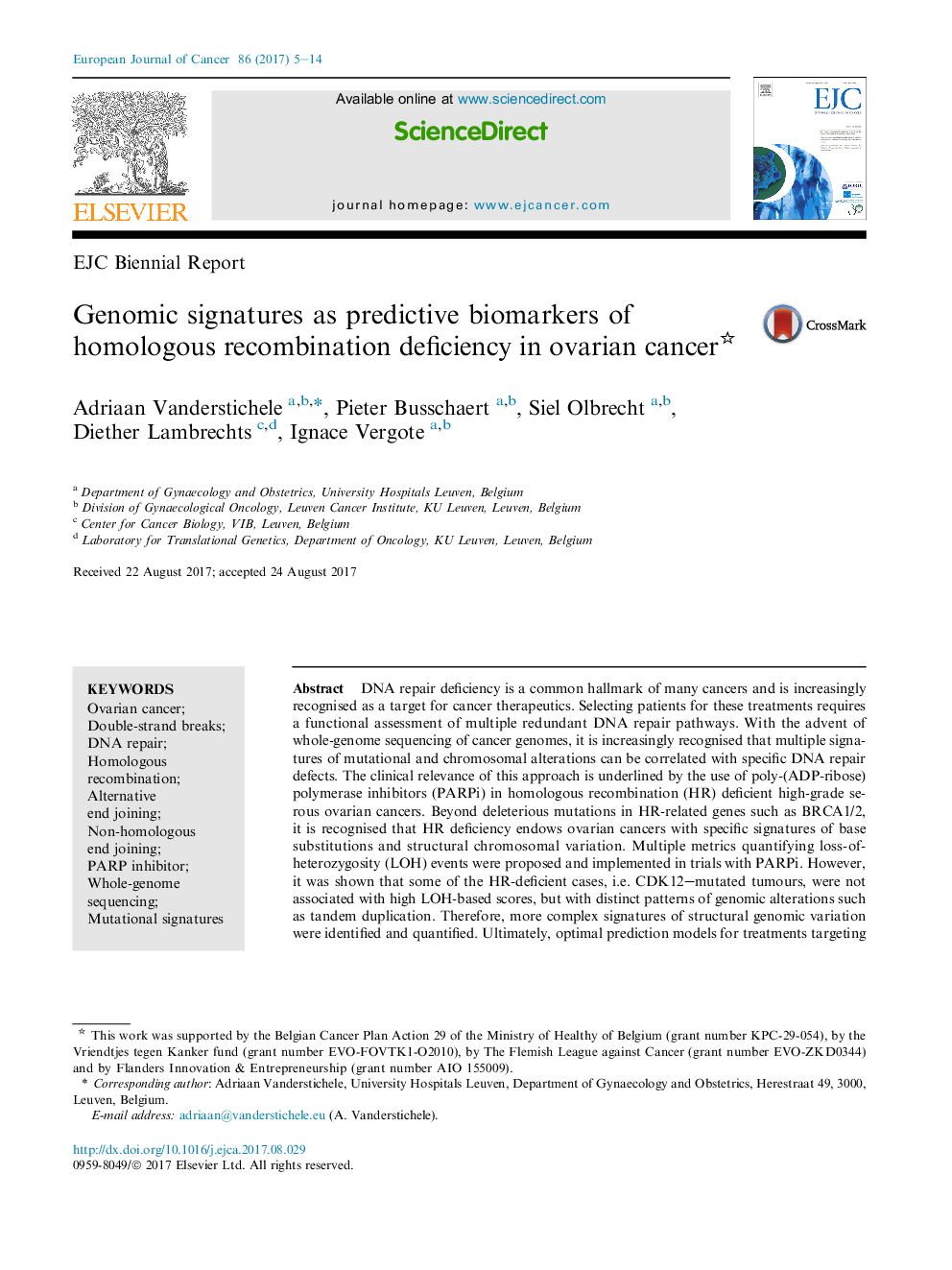| Article ID | Journal | Published Year | Pages | File Type |
|---|---|---|---|---|
| 5526148 | European Journal of Cancer | 2017 | 10 Pages |
â¢Leveraging DNA repair as a target for cancer therapy requires biomarkers of DNA repair pathway activity and deficiency (e.g. homologous recombination deficiency in ovarian cancer).â¢Patterns of mutational and structural chromosomal variation arise on a background of defective DNA repair.â¢Signatures of base substitutions and structural chromosomal variation can be extracted from annotated cohorts and correlate with specific DNA repair deficiencies.â¢The identification of genomic signatures in well-annotated patient cohorts will serve future attempts to stratify tumors based on the functionality of their DNA repair pathways.
DNA repair deficiency is a common hallmark of many cancers and is increasingly recognised as a target for cancer therapeutics. Selecting patients for these treatments requires a functional assessment of multiple redundant DNA repair pathways. With the advent of whole-genome sequencing of cancer genomes, it is increasingly recognised that multiple signatures of mutational and chromosomal alterations can be correlated with specific DNA repair defects. The clinical relevance of this approach is underlined by the use of poly-(ADP-ribose) polymerase inhibitors (PARPi) in homologous recombination (HR) deficient high-grade serous ovarian cancers. Beyond deleterious mutations in HR-related genes such as BRCA1/2, it is recognised that HR deficiency endows ovarian cancers with specific signatures of base substitutions and structural chromosomal variation. Multiple metrics quantifying loss-of-heterozygosity (LOH) events were proposed and implemented in trials with PARPi. However, it was shown that some of the HR-deficient cases, i.e. CDK12-mutated tumours, were not associated with high LOH-based scores, but with distinct patterns of genomic alterations such as tandem duplication. Therefore, more complex signatures of structural genomic variation were identified and quantified. Ultimately, optimal prediction models for treatments targeting DNA repair will need to integrate multiples of these genomic signatures and will also need to assess multiple resistance mechanisms such as genomic reversion events that partially or fully re-activate DNA repair.
